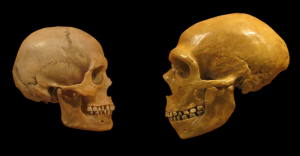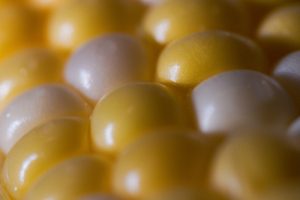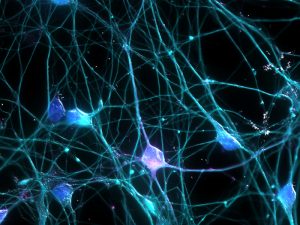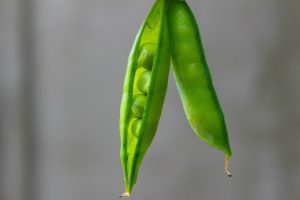Enter your address to receive notifications about new posts to your email.
Articles by Nicole Haloupek (78 results)
-
How baker’s yeast turns from friend to foe
Beer, doughnuts, and genetics textbooks have one thing in common: they were all made possible by collaborations between humans and yeast. Our fungal ally Saccharomyces cerevisiae resides not only in breweries, bakeries, and laboratories, but also sometimes in our own bodies—where, on rare occasions, it betrays us. S. cerevisiae is increasingly being reported as an…
-
Tales told by ancient human DNA
Archaeologists have long known how to extract millennia-old stories from a single tooth buried in an ancient ruin—and now geneticists have the tools to join them. Advances made in the last several years have enabled researchers to sequence tiny amounts of DNA preserved in very old specimens, such as the material inside a tooth from…
-
Hyper-conserved sperm proteins can still evolve rapidly
The fastest-evolving genes in eukaryotes commonly encode reproductive proteins—and the rate at which genes for male reproductive proteins change, in particular, often vastly outstrips the rate of change across the genome as a whole. A recent paper in G3: Genes|Genomes|Genetics describes an unusual exception: the amino acid sequences of the most abundant sperm proteins in…
-
Battle-scarred flies help us understand the genetics of aggression
Whether it’s a battle over territory or a brawl over a sports game, aggressive behavior is a hallmark of the animal kingdom. The influence genetics has on aggression is undeniable—but the process of determining the genes involved has been frustratingly slow. To better understand genetic factors involved in aggression, some researchers have turned to male…
-
To fight malnutrition, geneticists are developing more nutritious corn
Corn feeds millions of people, and its low cost makes it particularly important in developing countries. However, it can’t be relied on as the sole source of protein for either humans or livestock because—like most cereals—corn is low in certain essential amino acids. In the 1960s, a type of corn was discovered with boosted levels of…
-
A fly that thrives on a deadly diet
When a noni fruit ripens, it stinks like old cheese—or even vomit. Familiar to many in the form of expensive juices sold as health supplements, this pungent fruit is engaged in a slow-motion arms race with would-be insect pests. Fruit flies are unable to feast on noni—scientific name Morinda citrifolia—because the fruit is dosed with…
-
Is a statistical test letting significance slip through the cracks?
Every scientist is familiar with the p-value: it’s one of the most commonly used metrics in statistics to evaluate the likeliness that an observed relationship is due to chance. Typically, a cutoff is set at p=0.05, such that any p-value of greater than 0.05 means the result is deemed “not statistically significant”—a heartbreaking outcome for…
-
Beyond BRCA: new players in breast cancer pathways discovered
Mutations that disrupt the gene BRCA2 dramatically increase the odds of developing breast and ovarian cancer—but such mutations aren’t enough to cause cancer on their own. To turn normal cells cancerous, some of BRCA2’s genetic interactors must also mutate. In an article recently published in GENETICS, Ding et al. sought to identify some of these genes.…
-
Zebrafish offer hope for understanding severe form of epilepsy
The prolonged and severe seizures suffered by those with pyridoxine-dependent epilepsy (PDE) can lead to brain dysfunction and death if not treated. Standard antiepileptic drugs are typically ineffective for people with this rare genetic disorder—instead, they need high doses of vitamin B6 in the form of pyridoxine or pyridoxal 5′-phosphate. But even with this supplementation,…
-
Sperm and eggs don’t always join at random
Choosing a mate is hardly random. During courtship in the diploid phase of our life cycle, we often employ elaborate rituals and biological signals to attract and assess potential mates. But after that, we usually assume that eggs and sperm choose each other randomly at fertilization. Or so says Mendel’s First Law. But sometimes, Joseph…
-
Circulomes vary based on cell type
In the 1980s, scientists first noticed circles of DNA interspersed among the normally linear chromosomes of eukaryotic nuclei. Little is known about these molecules, which are called extrachromosomal circular DNA (eccDNA). Variation in eccDNA appears to be biologically significant; development of an organism often comes with increased numbers of eccDNA, for example, and certain types…







![Image by Michael Hermann (Own work) [CC BY-SA 3.0], via Wikimedia Commons.](https://s43361.pcdn.co/wp-content/uploads/2018/01/Webp.net-resizeimage-19-300x225.jpg)

![Image by unknown photographer [Public domain], via Wikimedia Commons.](https://s43361.pcdn.co/wp-content/uploads/2018/01/Webp.net-resizeimage-17-300x221.jpg)


